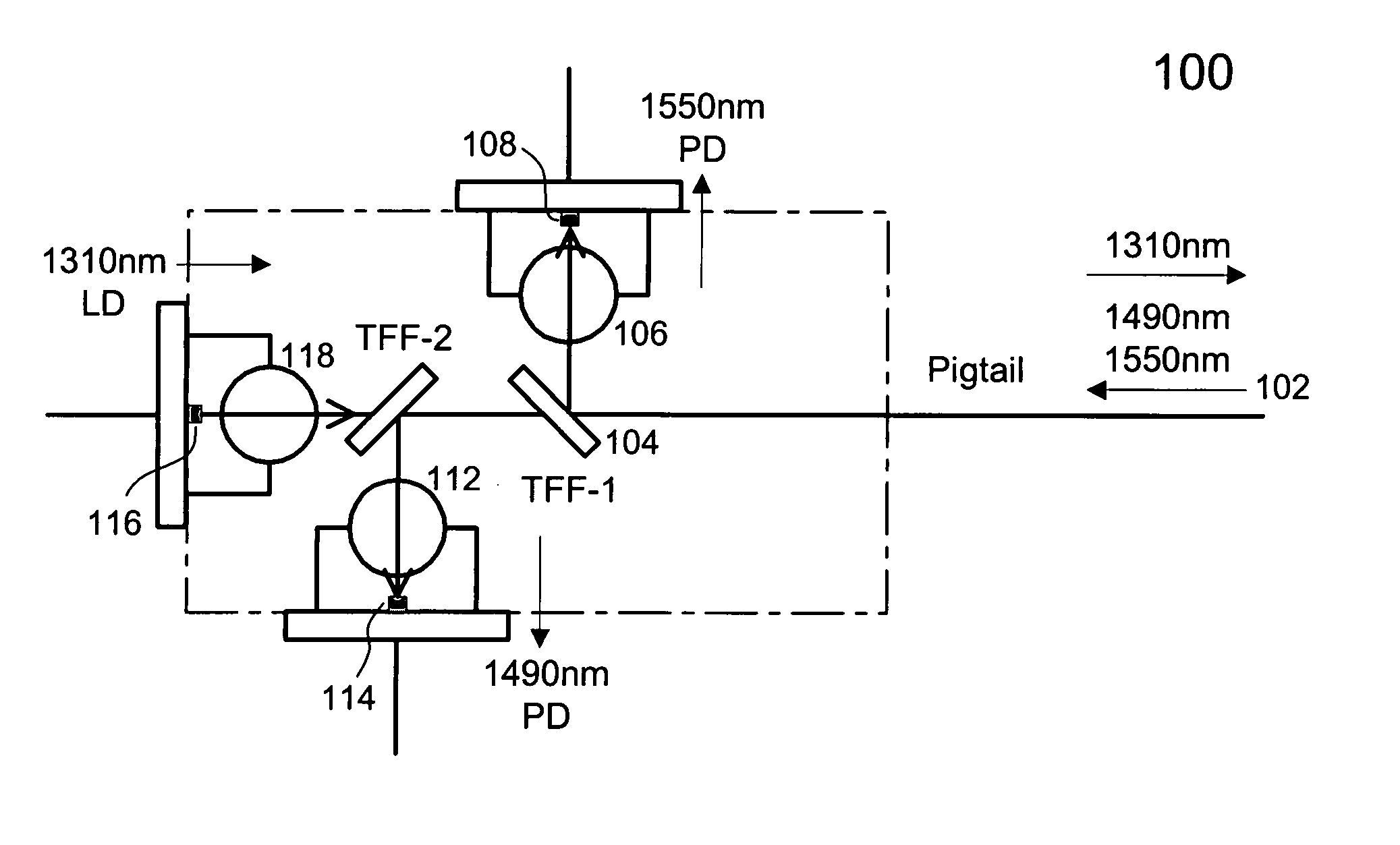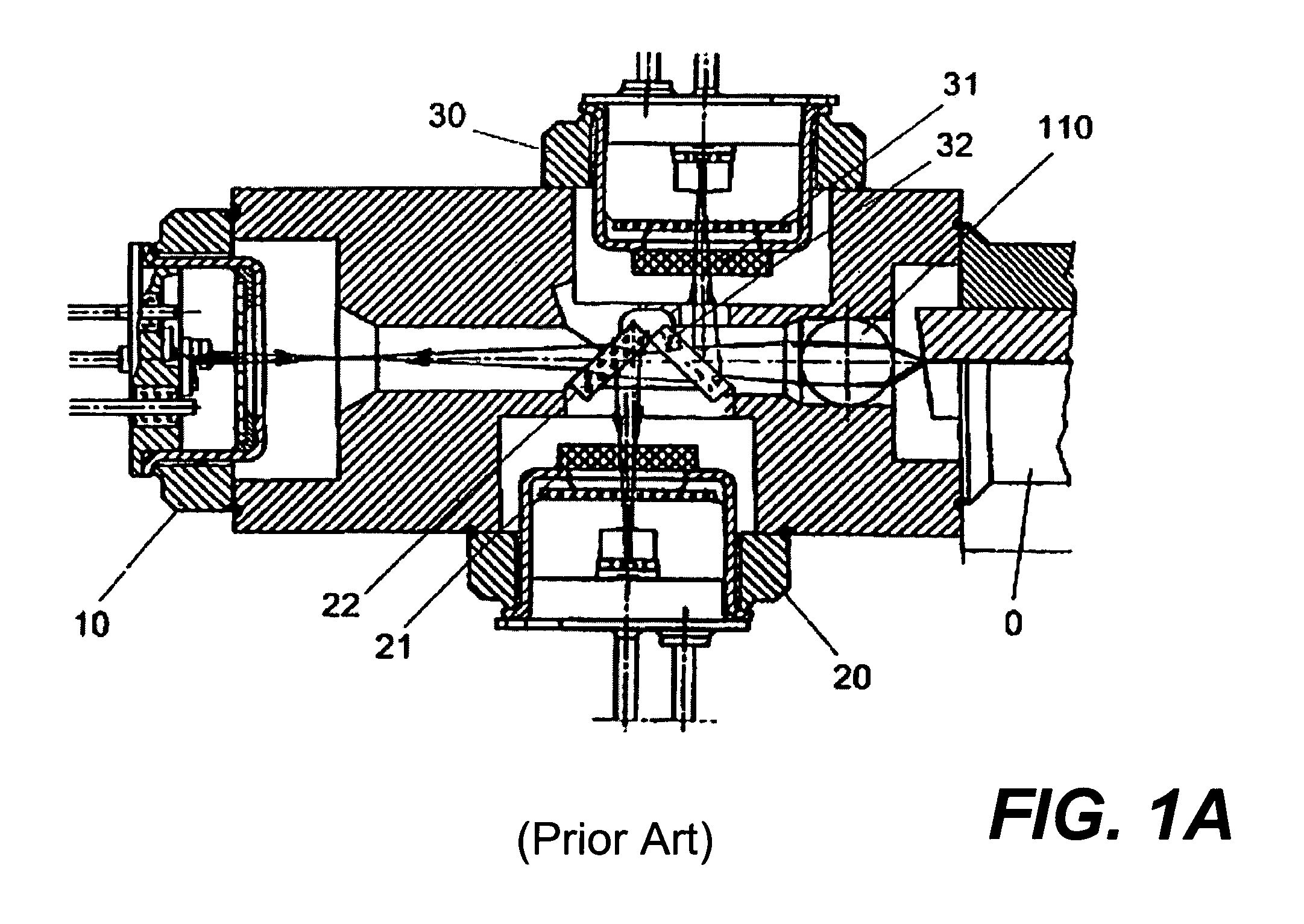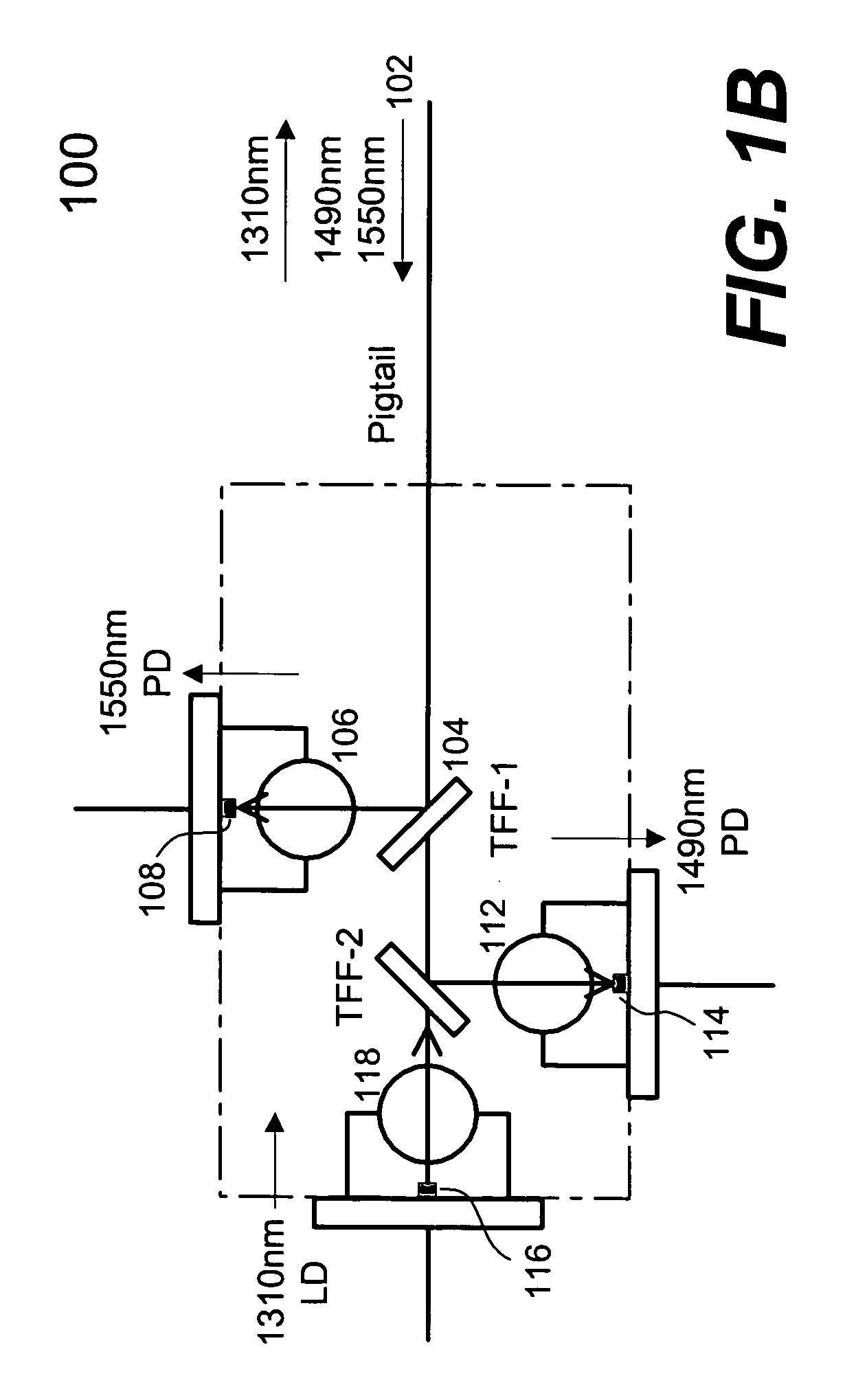Method and apparatus for separating channel signals
- Summary
- Abstract
- Description
- Claims
- Application Information
AI Technical Summary
Benefits of technology
Problems solved by technology
Method used
Image
Examples
Embodiment Construction
[0037]The present invention pertains to new designs of optical devices particularly useful for separating channels signals that are originally multiplexed. In accordance with the present invention, an optical filter configured to reflect a particular channel signal is positioned to receive a multiplexed signal at a small incident angle so as to minimize residuals of other channel signals in the channel signal. To further increase isolation from the other channel signals, another filter is introduced to transmit only the reflected channel signal, the another filter has a frequency response reciprocal to that of the original optical filter. One of the key advantages, benefits and objects is to increase channel signals separation efficiency by increasing isolation among separated channel signals. The present invention can be advantageously used in communications, particularly in fiber-to-home applications.
[0038]The detailed description of the present invention is presented largely in t...
PUM
 Login to View More
Login to View More Abstract
Description
Claims
Application Information
 Login to View More
Login to View More - R&D
- Intellectual Property
- Life Sciences
- Materials
- Tech Scout
- Unparalleled Data Quality
- Higher Quality Content
- 60% Fewer Hallucinations
Browse by: Latest US Patents, China's latest patents, Technical Efficacy Thesaurus, Application Domain, Technology Topic, Popular Technical Reports.
© 2025 PatSnap. All rights reserved.Legal|Privacy policy|Modern Slavery Act Transparency Statement|Sitemap|About US| Contact US: help@patsnap.com



